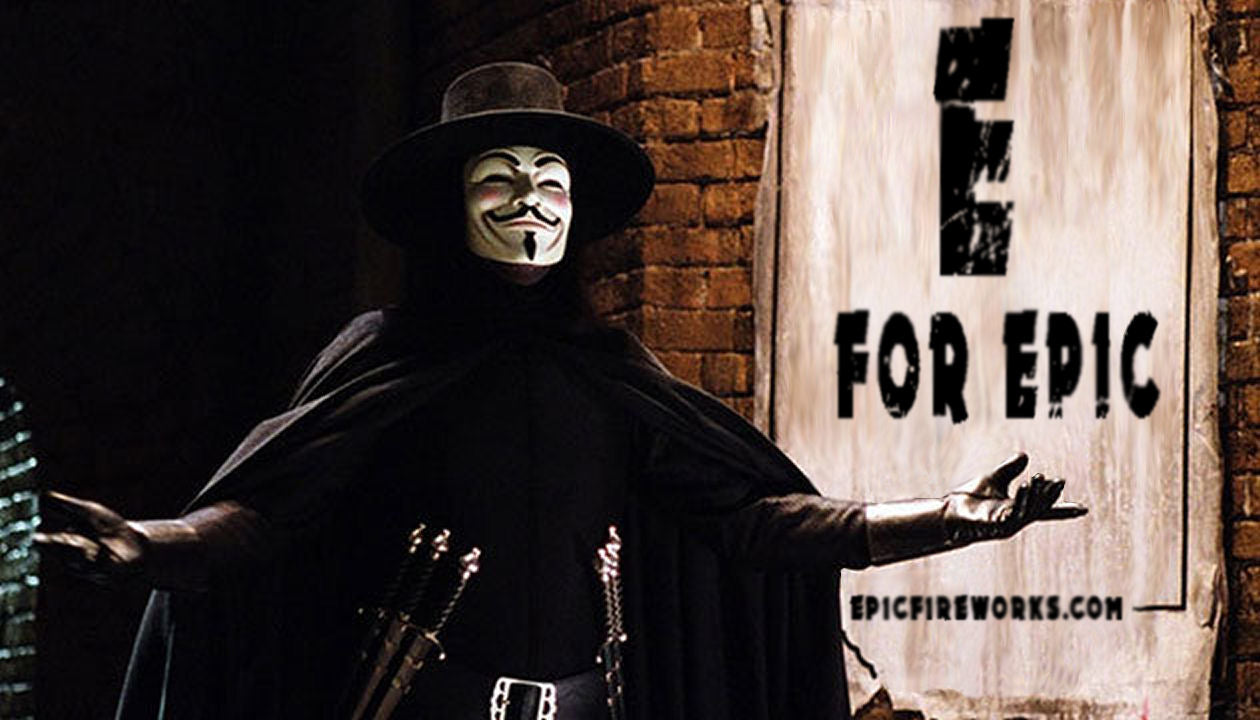
The Guy Fawkes Story
I can still remember vividly the first lesson in Infant School with Mrs Glover about Bonfire Night, Guy Fawkes and all the shenanigans relating to the Gunpowder Plot. I was a very naïve 5-year old and was absolutely distraught to learn of this man trying to blow up the King. Then, my father showed me the fireworks for the evening celebrations and I was utterly convinced that fireworks were actually sticks of dynamite which was not much of a stretch considering the ‘plain’ packaging on actual fireworks in the sixties.
Today, 400 years after the failure of the Gunpowder Plot, we still celebrate Bonfire Night but has some of the ‘legend’ become a bit of an afterthought as I believe that the conspirators, under the tutelage of Guy Fawkes, have become the hero of BFN when in fact we are meant to be celebrating the king's reprieve!
There were five main plotters at the heart of the Gunpowder Plot:
Robert Catesby - The main man and the mastermind behind the plot. Intelligent and charismatic.
Thomas Wintour – A wheeler dealer and ‘a bit of a lad’. Good to have around as he could source just about anything.
Thomas Percy – Had ‘family’ connections which could get him closer to the Lords at the time.
John Wright – Reputed to be one of the finest swordsmen in the country.
Guy Fawkes – Soldier and explosives expert who had just returned from Spain.
In the very early 17th century, there were two primary types of gunpowder used; the faster burning musket gunpowder and secondly the slower burning cannon gunpowder but scientists today proved that due to the sheer volume of explosives they proposed to use, it wouldn't have mattered much anyway.
Guy Fawkes was born in York in 1570 and was baptized into the Christian church just a few days old in the shadow of the imposing but exceptionally beautiful York Minster at the little St Michael's le Belfry the local Parish Church. Sadly, following the death of his father when he was just 8 years old his mum married again but to a catholic and Guy and his mother converted to the new faith.
Years passed, and the young lad was incensed at the desperate plight of fellow Catholics in the Eighty Years War and determined that he would garner help for his fight to reinstall the Catholic Church in England with their help. Unfortunately, the anticipated help was never forthcoming so Guy (known then as Guido) returned to England with his friend Thomas Wintour.
Religious discrimination was still rife and was mainly thanks King Henry VIII and his split from Rome (in the name of the love of Anne Boleyn) and then Queen Elizabeth 1st (Henry and Anne’s daughter) continued if only out of need to protect herself as the majority of her ‘court’ were Catholic and the Recusancy Act was introduced whereby all Catholics were forced to worships in the Anglican faith. There were people being killed left right and centre in the name of faith and this was to continue for sometime to come. On the succession of King James, as a practicing Catholic and now head of the Country, the Papists quite innocently believed that things would improve dramatically and they would be able to return to supporting the faith of their choice. However, King James I was a very weak-willed man who wanted to please all of the people all of the time. He demanded that everyone take an oath denying the Catholic church (in particular the Pope) authority over the King of England and provided that everyone ‘outwardly’ were in support of the Monarchy and in particular the Church of England, they could tick along quite nicely. However, he was just one of a long line of monarchs who took it upon themselves to rid themselves of the faithful be that the Protestant’s as in the cast of the Marian Persecutions or the Catholics in the case of the Elizabethan ‘riddances’.
Guy Fawkes was of course born and grew to manhood during Elizabeth’s reign and he was so incensed about the persecutions and what he saw as senseless deaths of the Catholic faithful he left England and went to fight with the Spanish Catholic army where he stayed for 10 long years honing his skills as a soldier and gunpowder specialist.
Queen Elizabeth I died childless and the crown passed to her cousin James I who was described as ‘the most conceited man on earth’ by his courtiers who brought into question his ability to rule effectively but needs must and he took the throne in March 1603. He tried to keep the peace but ultimately the cost of the upkeep of the royal court and their properties came from the Church of England’s wealthy protestants, who demanded he denounce the Catholic faith and his speech outraged Guy and his co-conspirators to such a degree that they decided to ‘return him straight to hell from whence he came!’ and so, the plot to kill the king and his parliament was afoot.
The plan took shape and it was determined that the plotters should tunnel under the Houses of Lords and fill it with gunpowder before blowing it all to kingdom come.
However, London was an incredibly busy place and the idea to tunnel under was thrown out. However, whilst actually attempting to dig the tunnel, there was a noise from the very room they needed to gain access to and further checks showed that the under-croft in question was being cleared by the previous tenant, leaving it empty. Thomas Percy, a man with many ‘connections’ quickly arranged to rent it giving them the freedom to move about at leisure.
In the early 1600’s, everything was transferred in barrels so no-one would have thought anything strange about barrels being taken into a cellar for storage. They obtained the 36 barrels of gunpowder and everything was ready to go. Unfortunately, the best laid plans and all that malarkey, the conspirators received news that the state opening was to be delayed due the ever-increasing threat of the Plague from the original date in February to 3rd October to 5th November 1605. In light of this and to keep out of harms way, Guy is known to have left the country for a while returning to London in late August to discover that the gunpowder was spoilt or decayed so it once again had to be replaced. Oddly enough, tests today by scientists and historians have proven that whilst ‘spoilt’ gunpowder would not perhaps have worked in a musket, it would still have been effective as an explosive.
Obviously, the cost of replacing the gunpowder was cause for concern to such a degree that it became necessary to add another to the list of conspirators, Francis Tresham (Robert Catesby’s cousin) who could help gain funding for ‘the cause’.
Unfortunately, the more people you add into a conspiracy the higher the likelihood of discovery and it was this very man who is thought to have brought the whole thing to a dramatic end.
A letter was received by Lord Monteagle basically advising him against attending Parliament and recommending he retire to the Country out of harms way. The correspondence was received on 26th October and was shown to the Chief Minister, Robert Cecil, which later resulted in the search of all of the parliament buildings.
On 4th November, the replacement gunpowder was in place and they were set for the next day. Whilst doing some last-minute checks to the barrels, Guy Fawkes was discovered in the under-croft with a pile of firewood (hiding the gunpowder at that point!). He told the men leading the search that the firewood belonged to his master Thomas Percy and they left with this information to report back to their superiors. Unfortunately, the name Percy was cause for concern to the authorities as he was a known Catholic supporter so they returned to the undercroft later the same evening where once again, they came upon Guy who gave his name as John Johnson. He was searched and found to have in his possession a watch, touchwood and slow burning matches and subsequently, they moved the coal and wood to discover 36 barrels of explosives. The plot was discovered and it marked the beginning of the end for all involved.
Guy Fawkes was captured and questioned and in fact the King almost admired his resilience. But, despite constant questioning, it was eventually necessary for the King to offer permission for further torture of increasing intensity until the facts were known and the conspirators details gained. So to the rack – the worst device of its kind in England and the only one in existence in the country was in the Tower of London at the Lord Lieutenant’s lodge. Although we have to admire his fortitude, on 7th November his resolve was utterly broken and he confessed.
Of course, by this time, news about the plot was widely known and having secured property in the Midlands the remaining conspirators set out there to hide. However, with a couple of hundred kings-men after them, it was not to be long before they were discovered, having reached Holbeche House. Wright, Rookwood, Catesby and Percy were all killed in the ensuing fire fight and the remainder were injured and taken captive before being taken to the Tower.
Once the executions started, there was no stopping them. The men who had died in the battle at Holbeche were actually exhumed so that they could be beheaded and their heads displayed on spikes outside of the Houses of Lords.
In the end, they were all sentenced to be hung, drawn and quartered but both Guy and Keyes are known to have outsmart the hangman by leaping from the gallows. Guy died from his broken neck before being emasculated, disembowelled and beheaded and then for good measure (just to be sure you know) chopped into four pieces! Unfortunately, Keyes survived the fall just long enough to be brought to the quartering table.
After the executions, Parliament met later in January 1606 and passed a new law which was simply The Thanksgiving Act ensuring that services and sermons would be a regular feature over the coming years, remembering how close they were to Regicide. For the next 200 years, bells were rung and fires lit in thanks for the safe deliverance of the King which in years to come was to include effigies depicting the Pope or the Devil before they decided to have a ‘Guy’.
Here we are over 400 years later and it still seems a little odd that to this day, we use fireworks which contain black powder, which is virtually the same as gunpowder, in celebration of the foiling of the plot to kill the king.
Bonfire Night has certainly stood the test of time and the introduction of fireworks has just made us even more thankful that firstly, the celebration exists and secondly, that however well-intentioned, terrorism will never win.
